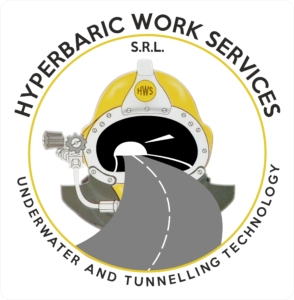The full section mechanical cutter consists of a metal cylinder called shield, at the end of which there is a rotating head that normally rotates between 1 and 10 revolutions per minute and on which the actual excavation tools are mounted (rotating tips or cutting discs), which can be of different sizes and different construction materials. The speed of rotation, the speed of advancement and the manufacturing of the tools depend on the dimensions of the TBM and on the compactness, hardness and density of the material to be broken up and removed. Behind the rotating head there is a chamber where all the excavated material, through a screw, is collected and deposited on a conveyor belt to be taken outside the tunnel.
The advancement of the TBM is guaranteed by powerful hydraulic jacks which, aiming at the last segments installed, push the cutter towards the excavation face. All the services pass inside the shield, including energy and pipelines for the mixing sludge.
Furthermore, the TBM is assembled by all the systems that are needed for its operation:
the control chamber, the mechanized system for positioning the prefabricated segments and the hyperbaric chamber.
